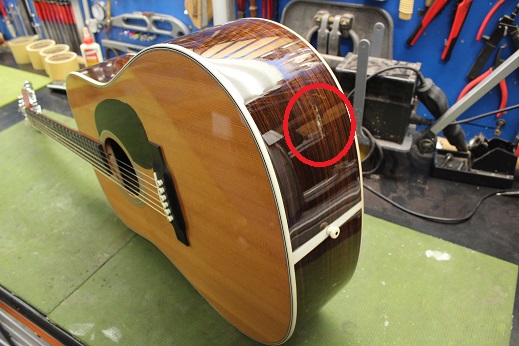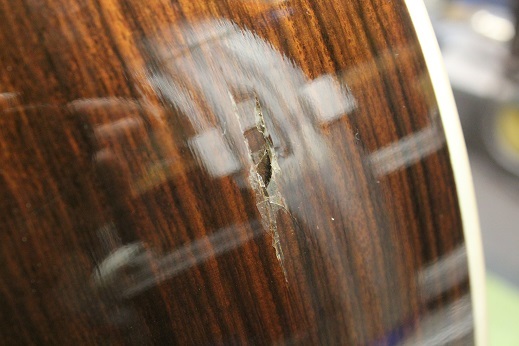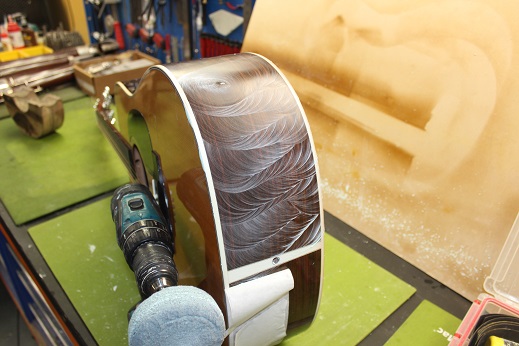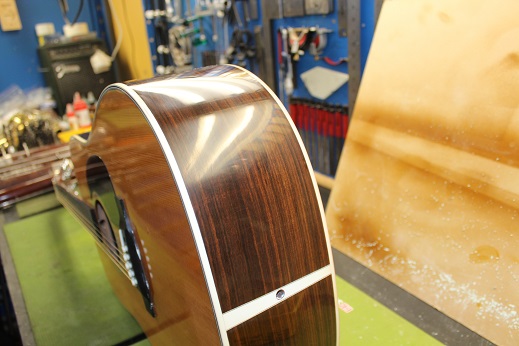
 |
|
#16
|
|||
|
|||
|
Quote:
"Just think of buffing as very find sanding..." Any method that performs that fine sanding. The most common are progressively finer abrasive sheets ("sandpaper") and/or progressively finer abrasive compounds. Abrasive sheets go from the incredibly coarse 20 grit to incredibly fine 12000 (or higher) grits. Some have waterproof backings, for use with lubricants. For finish repair, one often starts with 1500 or so and works progressively finer, each finer abrasive removing the scratches left by the previous abrasive. Abrasive "rubbing" compounds can be purchased as an abrasive suspended in liquid or as solid blocks. Compounds are available from quite coarse to very fine. Most guitar "polishes" are a very fine abrasive in a liquid "vehicle". The liquid compounds are typically "rubbed" by hand with a cloth, with a foam polishing pad in a hand-held drill or drill press or an automotive-style polisher with a bonnet. The solid blocks are typically applied to the wheels of a stand-style polisher and the guitar "presented" to the buffing wheels. The above are used in various combinations that vary from one person to the next. For example, it is common to use buffing wheels with a solid compound and finish-off with finer liquid compounds that are worked by hand or with a polishing machine. One chooses the combination that works best for them and their situation/environment. |
|
#17
|
|||
|
|||
|
I had learned the hard way a long time ago that buffing out a dent will only work if the dent is very shallow, also even if you do get the dent leveled to the surrounding finish you probably will see a visible depression in reflected light. A dent really needs to be filled then leveled for a invisible repair.
|
|
#18
|
|||
|
|||
|
Quote:
 , ,   Up close  Some buffing    All gone 
__________________
Cole Clark Fat Lady Gretsch Electromatic Martin CEO7 Maton Messiah Taylor 814CE |
|
#19
|
|||
|
|||
|
A minor ding just adds character.

__________________
Breedlove, Landola, a couple of electrics, and a guitar-shaped-object |
|
#20
|
|||
|
|||
|
Aw, that guitar is all Gommed up. |
|
#21
|
|||
|
|||
|
Taylor finishes I think are harder to fix, it's really a good idea if you can to let them, or an authorized warranty center look at it.
I had a mic fall and hit my Grand Symphony behind the bridge and it gouged a 6 inch long valley down to the end of the top. it was hideous. Sent it to Taylor, and the repair was remarkable. The also found a 2 braces that needed to be reset and took care of a few minor setup issues I never resolved. It took some time, they had the guitar for about 9 weeks, (I have others, so not a big deal there) I I needed anything fix on that guitar in the future, I'd do it again. They are fantastic. |
|
#22
|
|||
|
|||
 Recent photos still show him with Wilma, although he has the new signature guitar from Lowden.
__________________
Breedlove, Landola, a couple of electrics, and a guitar-shaped-object |
|
#23
|
|||
|
|||
|
Quote:
__________________
1980 Guild D50 (Westerly), Antique Sunburst 2010 Epiphone Masterbilt AJ500RE 2010 Taylor GS Mini 2011 Taylor 814ce 2015 Taylor 356ce (12 string) 1975 Carlo Robelli SG Custom (Sam Ash model) Fishman Loudbox Mini VOX AGA70 |